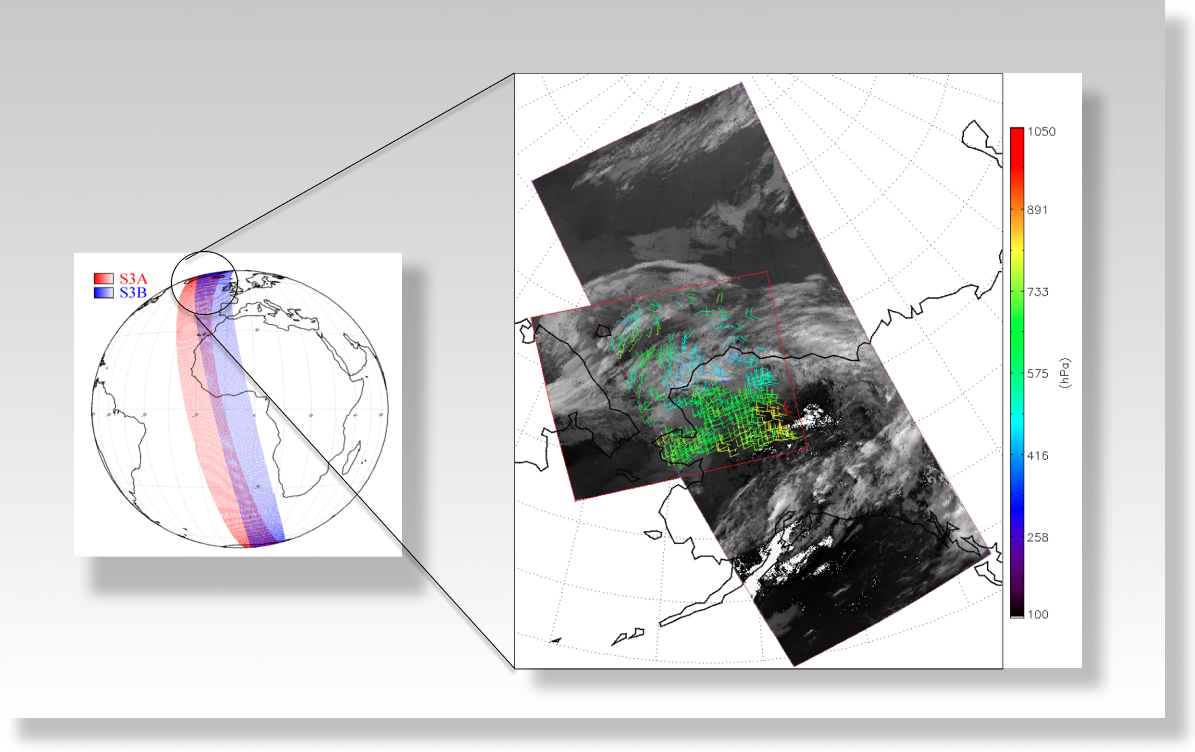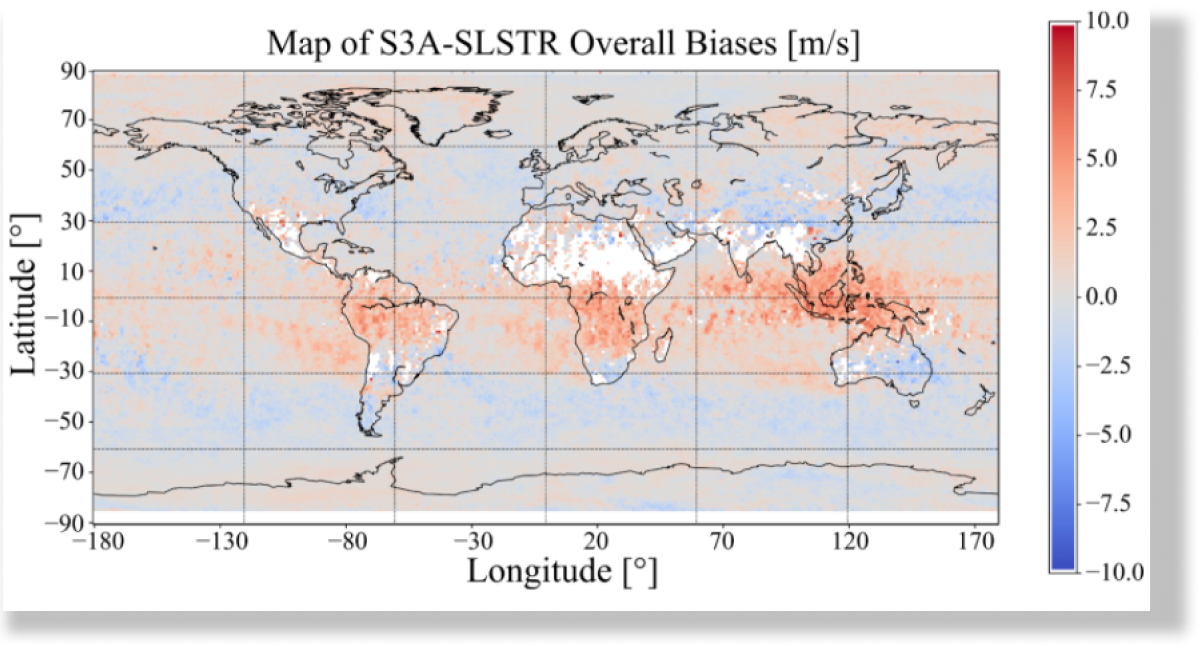Estimating wind from Sentinel-3 to improve weather forecasts
How to increase the accuracy of weather forecasts? EUMETSAT computes Atmospheric Motion Vectors from Sentinel-3 to estimate atmospheric wind and improve Numerical Weather Prediction models.

Background
Numerical models used for weather forecasts need continuous ingestion of observations of current weather status to provide reliable estimates. Among the input variables, updated and accurate wind observations play a crucial role in Numerical Weather Prediction (NWP) models, as wind has a long-lasting effect on all the other variables. One technique to estimate atmospheric wind is through the computation of Atmospheric Motion Vectors (AMVs).
A new demonstrator with Sentinel-3
AMV is a product that is continuously generated from geostationary and low Earth orbit satellites. AMVs are computed by tracking clouds or areas of water vapour and calculating the relative motion of similar features in consecutive satellite images and therefore the technique is applicable in overlapping satellite tracks (e.g. satellites in tandem or in a constellation).
In December 2020 EUMETSAT developed the first demonstrator of a tropospheric wind AMV generator from Sentinel-3 SLSTR (Surface Temperature and Sea Surface Temperature) data. The scientific validation of the SLSTR AMV products is documented in Barbieux, et al. (2021).
AMV benefits in tropical cyclone forecasts
Recent impact experiments at the Met Office and elsewhere have shown that the AMV data enables to offer higher accuracy in forecasts and in hurricane track forecasts. (e.g. Soden et al. 2000).
Alternative sources of wind information are derived from the mass field, which is easy to observe and can be used to derive the wind field in the extra-tropics areas. However, for the tropics and smaller-scale features the data is less accurate as the coupling is weaker. For best results, models require information on both the mass field and the wind field.

Key features
Covering oceans and high latitudes
Sentinel-3 offers a new source of information where conventional wind data (sondes and aircraft) are scarce.
Consistent monitoring of the wind in polar regions
SLSTR will help maintain wind observations in polar areas also during the transition between the current EUMETSAT Polar System (EPS) and its second-generation (EPS-SG).
Near Real-time products to the users
The processor creates AMV and disseminates them in near real-time to the users.
Benefits of WEkEO for Atmospheric Motion Vectors computation
EUMETSAT demonstrator is hosted on the WEkEO environment. WEkEO has been chosen to host the service as it offering several benefits including:
- Access to SLSTR L1B data in near real time, which is currently not possible from any other provider
- Performant cloud capabilities and infrastructure
- Integrated data access and processing system
- Professional technical support team
Contact us to know more about Atmospheric Motion Vectors computation.





